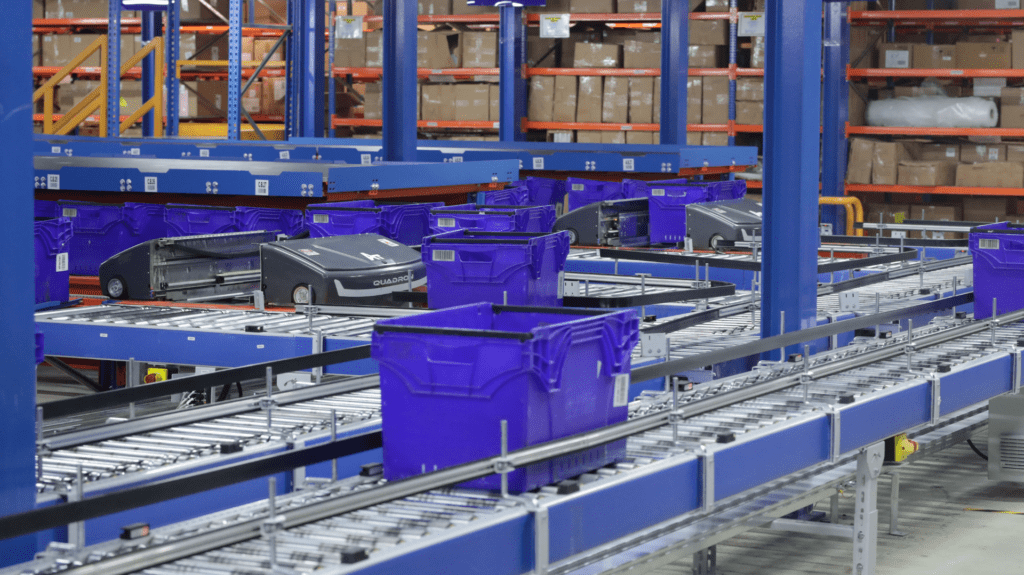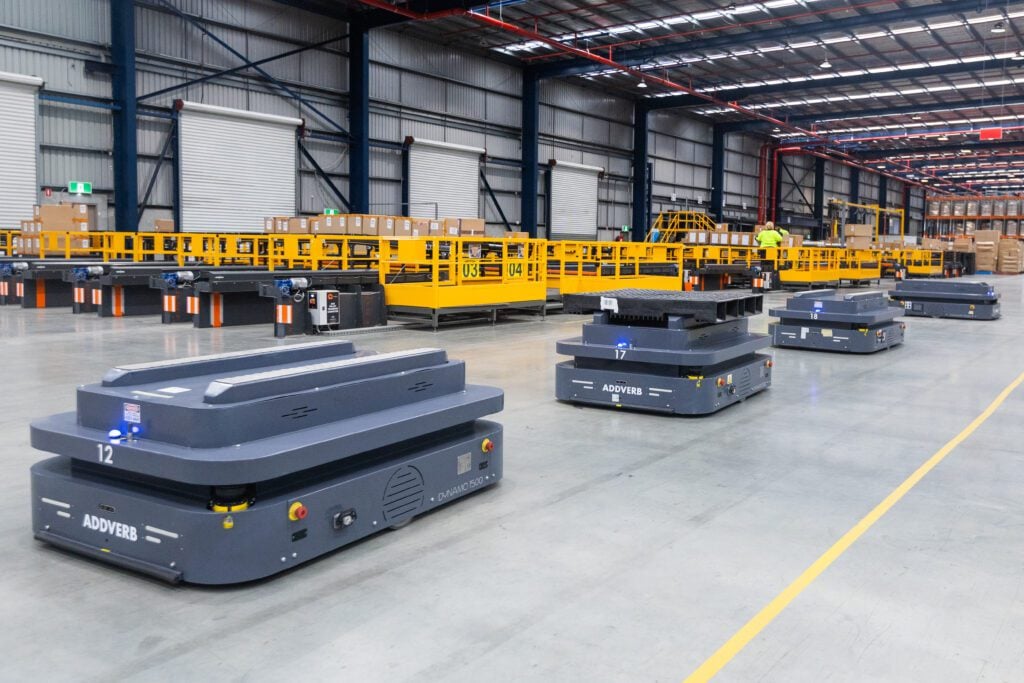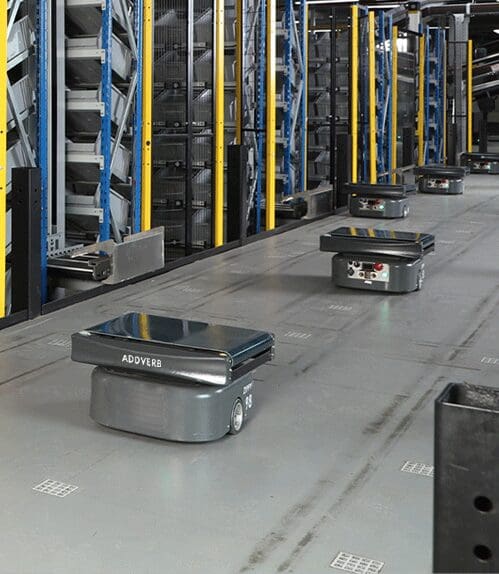Table of Contents
The supply chain management landscape is undergoing a remarkable transformation due to technological advancements. From sourcing to delivery, every step is being influenced. Businesses today face the exciting challenge of choosing the perfect technology to tackle their unique obstacles and enhance their key services.
The key to success lies in recognizing operational hurdles and integrating cutting-edge technologies like AI, IoT, and automation to stay ahead in the competitive market.
What is Supply Chain Management?
Supply chain management (SCM) encompasses the end-to-end management of goods and services, from raw material sourcing to the final delivery of products to consumers. It involves planning, sourcing, production, logistics, and returns, to create a streamlined, cost-effective system that enhances efficiency and reduces waste.
Effective SCM plays a pivotal role in reducing costs, production time, and material wastage, making it essential to invest in both expertise and technology for continuous improvement. Modern SCM solutions provide real-time visibility, helping businesses make data-driven decisions to meet fast-changing consumer demands.
Why Businesses Need Effective Supply Chain Management Systems

- Improved Collaboration: SCM systems eliminate communication silos, allowing seamless data sharing between teams and partners. This holistic view of the supply chain leads to smarter, faster decisions that boost productivity and profitability.
- Customer Satisfaction: In sectors like e-commerce, efficient supply chain operations are key to timely deliveries, which directly impact customer loyalty and satisfaction.
- Inventory Optimization: Precise inventory tracking boosts operational efficiency by reducing delays and errors in shipping, cutting down on wasted resources, and enhancing order fulfillment accuracy.
- Quality Control: Routine quality checks throughout the supply chain ensure that issues with materials or processes are identified early, preventing costly product recalls and maintaining high standards.
- Cost Reduction: SCM systems use predictive data to allocate resources effectively, minimizing inventory holding costs and maximizing the flow of high-demand products.
- Shipping Optimization: Advanced SCM systems can recommend cost-effective shipping methods tailored to different product types and order sizes, improving bottom-line profitability.
- Demand Forecasting: With integrated SCM systems, businesses can access real-time data to predict and respond to market demand with precision, reducing inefficiencies and staying ahead in a volatile market.
Research by McKinsey shows that digital supply chain management can boost annual earnings by 3.2% and reduce supply chain costs by up to 10%. Integration of AI-driven predictive analytics, real-time monitoring, and automated decision-making platforms has resulted in more agile, resilient supply chains that can respond effectively to disruptions.
Strategies to Streamline Your Supply Chain
- Predictive Planning: Unexpected events—like machine failures or logistics disruptions—are inevitable. However, using predictive technologies, businesses can anticipate and mitigate delays, allowing for proactive rescheduling of shipments and deliveries.
- Automation Integration: Companies like Amazon and Walmart have embraced automation technologies such as AI, robotics, and IoT to optimize supply chain functions, from warehouse management to last-mile delivery.
- Customer-Centric Approach: Meeting fluctuating consumer demands is crucial for brand loyalty. Leveraging demand forecasting tools helps businesses align inventory with customer needs, cutting costs and minimizing wastage.
- Supply Chain Visibility: Full visibility into every component of the supply chain management allows businesses to identify and address inefficiencies before they become problems, enhancing overall responsiveness and operational efficiency.
Automation in Supply Chain Management (SCM)
Discover how Addverb revolutionized omnichannel fulfillment for Maersk, optimizing space and prioritizing order flow for seamless B2B and B2C operations.
Automation is revolutionizing supply chain management by enhancing efficiency, reducing errors, and increasing visibility across the supply chain. By integrating automation, businesses can streamline complex processes such as inventory management, order fulfillment, and logistics, leading to cost reductions and faster delivery times.
Key Automation Robots for SCM
- Autonomous Mobile Robots (AMRs): AMRs navigate warehouses autonomously, optimizing material movement and reducing manual labor.

- Automated Guided Vehicles (AGVs): AGVs transport goods within a warehouse using predefined paths, improving accuracy and throughput.
- Sorting Robot: These robotic sorters use AI to sort and organize goods for faster and more precise order fulfillment.
- Automated Storage and Retrieval Systems (ASRS): ASRS manages inventory storage, reducing human intervention and maximizing space utilization.

- Collaborative Robots (Cobots): Cobots work alongside human workers, handling repetitive or hazardous tasks, improving safety, and boosting productivity.
Benefits of Automation in SCM
- Increased Accuracy: Automation reduces human errors, ensuring accurate inventory levels and processes run smoothly.
- Cost Efficiency: By optimizing labor and reducing waste, automated systems lower operational costs.
- Scalability: Automation technologies can be easily scaled to meet growing demand, making them ideal for dynamic supply chain management.
Conclusion
Effective supply chain management is fundamental to business success. By integrating advanced technology, businesses can transform their supply chains into agile, responsive, and cost-efficient systems. Every business is unique, so the tools and strategies adopted must align with specific goals and operational needs. As market conditions evolve, your supply chain management must remain flexible, scalable, and ready to adapt to ensure sustained growth and customer satisfaction.
Founded in 2016, Addverb offers complete robotics solutions for warehouse and industrial automation, with a strong global presence through its subsidiaries worldwide. The company provides a range of in-house automation products, including Autonomous Mobile Robots, ASRS, and sorting technologies. It serves over 350+ clients, including well-known companies such as Coca-Cola, Amazon, and DHL.






